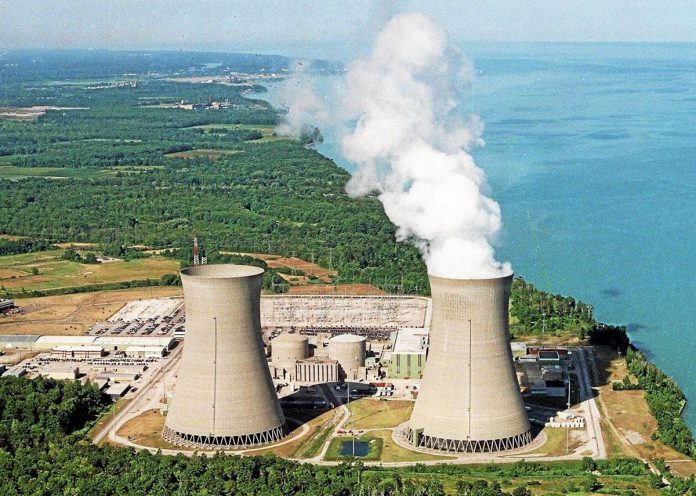
Nuclear Instrumentation is one of the most critical applications when it comes in terms of processes &operations especially with human interventions. Like oil & gas oriented applications, nuclear operations are the hazardous processes in terms to be conducted while maintain the environment & human beings safety. So let’s begin to know about nuclear energy and why it is so much critical.



Nuclear energy is very long lasting as well as comparatively green energy when compared to other major sources of energy like burning coal, fossil fuels etc. There is no doubt in that nuclear energy is the future because the growing demands of the growing population can be only sufficed in a rapid and long lasting manner by nuclear energy. This reason acts as the backbone behind the idea of generating nuclear energy. So how do we generate it? In a typical nuclear power plant, uranium U-235 also called as Yellow cake, is the source used. There is section inside a nuclear reactor called as “Core”. In this core, multiple clusters of uranium fuel rods in an alloy based structural pipe is placed. This uranium is then highly bombarded with neutrons. When this bombardment happens, the uranium atoms split up and the split uranium atoms again get into splitting phase due to the continuous bombardment of neutrons inside the core chamber. This overall process of bombardment and splitting is called fission. This fission works like a chain reaction i.e. continuously happening one after another. Due to this fission process, tremendous heat energy is released in the range of nearly 500 Degree Celsius. This very high temperature of the fission process is used to heat water which is flowing in surrounding channels outside to this core area. Hence water then gets converted to steam. This high temperature steam is directed towards turbine units which in turn generate electricity. This is how nuclear energy is used to generate electricity which is used by all of us whether it is for commercial usage or for any industrial setups.
The above process seems to be very simple and lenient. However, that’s not the case here is. Nuclear reactors are like live high end explosive bombs with not only immediate fatal consequences when failed but even its after effects are fatal and last for 100 years. Nuclear reactor holds the core section where the fission chain reaction happens. Since it is a chain reaction, it is very important to control it simultaneously & quickly immediately when the desired temperature is received, because the response time is very critical when it comes to control because chain reactions are very fast in nature to happen and to control them by manual and machine intervention within controllable time is another challenge. Control rods are use to absorb the excess or waste neutrons which ultimately slower down the chain reaction inside the core and so does the temperature goes down. If this control action gets failed due to some natural calamities or any machine/instrument failure, then in just a small span of time, the temperature goes to nearly 2000 degree Celsius which is not desired as the uranium core as well as surrounding metal construction will get melted and will come to contact to environment and spreading huge amount of fatal radiation. Also, due to tremendous heat and pressure during this meltdown scenario, explosion occurs which again spreads the radiation up to larger distances in the vicinity of the nuclear plant.



Uranium is highly radioactive in nature and hence handling it requires radioactive protection setup & gears. Nuclear instrumentation comprises of all the other process instruments like, flow meters, pressure & temperature sensors, control valves, analysers and so on. There are some instruments that particularly can be seen in nuclear power plants only and nowhere else. They are radiation detectors. Popular and commonly used radiation detectors are ionization chamber, photomultiplier tube, scintillation detector, Geiger Mueller counter and proportional counter. All these detectors generally have a radioactive source emitting radiation and based on radiation absorption levels by the detecting filament, the radiation levels are measured. A very important principle of instrumentation works on a major level in the entire nuclear application areas for measuring multiple parameters inside and in periphery areas of the reactors. This principle is called “Air-bubbler method”. It is also called as Air-purge method. Utilising this method, multiple parameters like, pressure, level, density and differential pressure are measured. This principle is highly demonstrated in nuclear plant areas because not all the areas are accessible for human operators and even instruments to access and operate directly from the point of measurement, because there, the environment is highly radioactive and so highly hazardous. For such reasons, remote measurement and indirect measurement technique was developed of which air-bubbler method was the most successful method which is even used today broadly. In this method air filled purging lines i.e. Stainless steel tubing are run form the safe are of human operator to the radioactive /process point of measurement area, through the safety concrete walls and embedded plates provided on them. This way the radioactive process and human operability area is isolated and even in this isolation, parameters like pressure, differential pressure, level, density are measured safely and readings are transmitted to displays unit for observations as well as in control room for further logics and corrective actions.

More than a nuclear power plant, more density of instrumentation is seen nuclear recycle plant. This plant is responsible for recycling the nuclear waste and use it on an optimum level before dumping it to deep underground which is normal standard practice of nuclear waste disposal. Also, in nuclear power plant, the reactor building grabs a space of only 20 to 30% of entire field. The remaining 70-80% field area comprises of reactor safety buildings, which can be simply termed as emergency shutdown systems, reactor safety cut-offs systems, reactor cooling systems, reactor power backup units and reactors switching controls because generally reactors are made and run in pairs so that backup of power generation is always there for use. For instrumentation engineers, we come across majorly all the instruments like, all types of gauges, switches, transducers, flow meters, control valves, transmitters, gas analysers, HVAC systems, redundant PLC controls systems with star and ring topologies, SCADA systems, emergency response system like “SCRAM”, especially related to cooling water systems and fuel rods deployment system in order to control chain reaction and prevent core meltdown phenomena. As mentioned previously, just like oil & gas files, nuclear power plant is very bulky operation and hence contains I/Os count in range of 2000 to 5000 which is a very big number and we see a nuclear recycling plant, the I/Os range are in range of 40000 to 50000 which is very very huge . From these range values, we instrumentation engineers can imagine how big the nuclear plants and their processes will be and what will be the quantum of instruments & instrumentation engineering work involved in it.
Hope the above article might be helpful to you for getting brief information & overview about nuclear filed and instrumentation engineering associated to it. For additional more specific technical information on nuclear instrumentation topics and even its sub-topics related & relevant to it, please feel free to write us at [email protected] .Your all doubts & queries will be answered. Also, necessary articles or even training sessions can be arranged & provided for the same, if required by you.
Have a Happy Learning…!


